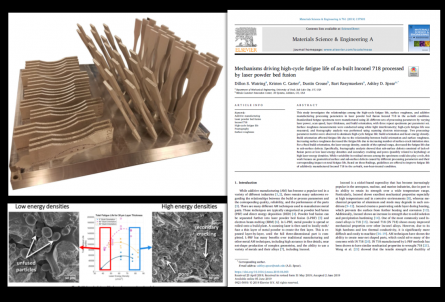Ph.D. student, Dillon Watring, recently published his work on the effect of additive manufacturing parameters on the fatigue-driving mechanisms in AM IN718. Dillon and his collaborators found that build orientation is linked to surface roughness, which is, in turn, linked to fatigue life. For a given build orientation, there is an optimal range of laser-energy density; outside of this range, internal defects like lack-of-fusion and secondary cracking lead to reductions in total fatigue life. To read more, check out the complete manuscript.
This work is supported by an NSF CAREER award (CMMI-1752400) and by the DOD Office of Economic Adjustment (ST1605-19-03).

